Canadian artist Aaron Moran has a bit of a thing for geometry: his mathematically-infused sculptures fusing the forward-thinking of shapes and space with the earthliness of nature, by way of their materials; namely found wood. Evoking early modern art with the colours and patterns he paints onto his reclaimed wooden sculptures – both 2D and 3D – Moran’s works finely balances heritage and futurism, he himself talking of excavating the “history of location”, whilst exploring the aftermath of urban growth.
Fascinated by his complex, Rubik’s Cube-esque works, we spoke to Aaron to find out more about his work, his inspirations and his future plans…
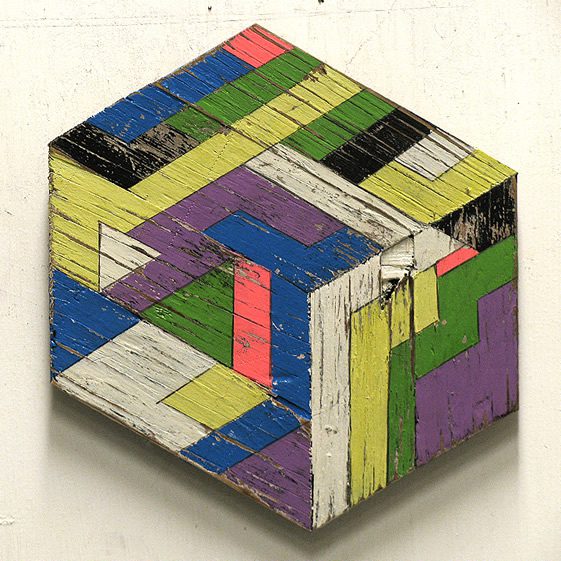
Ark (2)
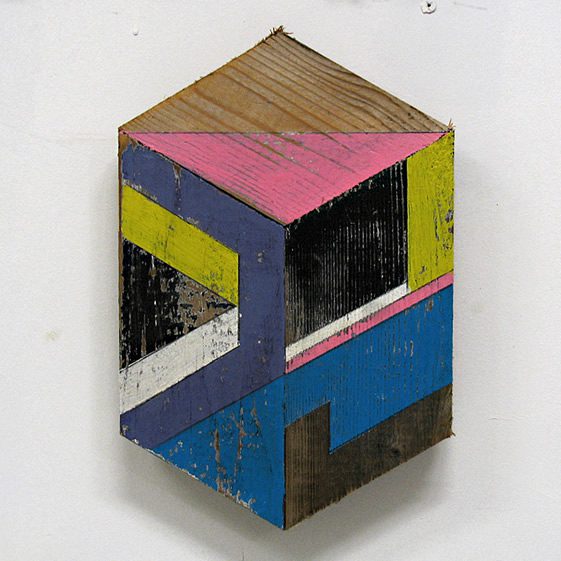
Economy II (8)
Aaron, where are you from, and where do you live/work from now?
I am from Langley, British Columbia, Canada. I currently live in Abbotsford BC but am temporarily working out of a home studio in Langley since finishing a one year residency in Harrison Hot Springs BC.
How do you explain what you do to the non-arty types you meet?
I think the same way I explain it to anyone – that being – abstract geometric assemblages from found materials.
You work, almost obsessively, with geometric shapes and found woods; when did this start, and can you tell us a little about the background to this style?
From the first time I explored the lots and fields where I find my materials, I have been aware of the way garbage is left in jagged piles composed of shards of random waste. I think this has become mirrored in the sculptural work; they are essentially an organised collection of fragments. In my two dimensional work, I like to think that the idea of zoning and sectioning off land by municipalities plays a part in the way the images are composed.
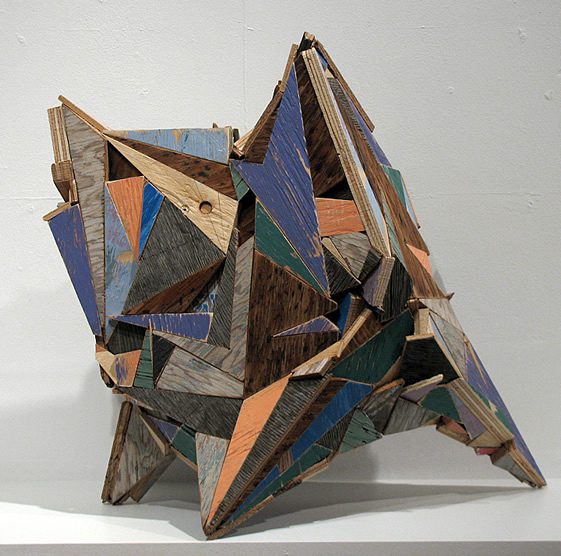
Facade System I 19 x 12 x 18
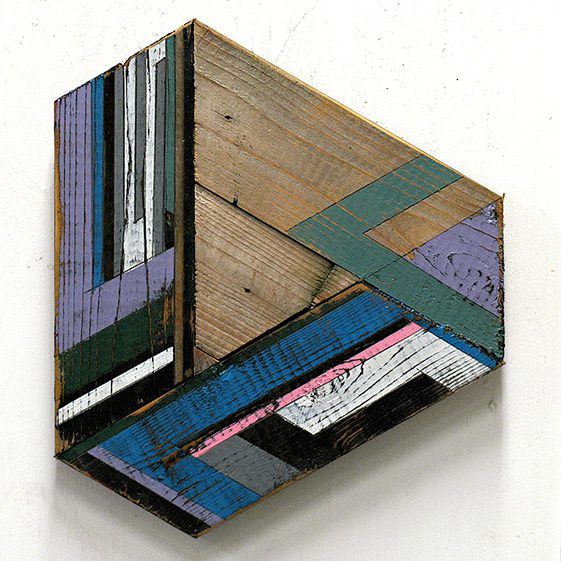
Economy I (28)
Can you tell us a little about the process of creating one of your wooden sculptures?
In the most basic steps it consists of searching for materials from construction or demolition lots, cleaning and organizing the materials, and cutting them into arbitrary geometric fragments. What comes next is hours of composing the fragments into sculptural forms with attention placed on composition (in terms of colour, texture, size etc) and dynamism. I try to create a palette that emphasizes the source material rather than make one up entirely.
Do you keep works that don’t quite make the grade, or do they find their way into new works?
This happens very often indeed! I frequently reconfigure works that I am no longer happy with and try to re-recycle them into new work. As I fine tune where these works are going, I increasingly find that I’m not as satisfied with earlier work. This being said, I also completely toss unsatisfactory work.
Where do you feel most inspired?
Walking through fields where neighbourhoods or forests once stood and new developments are planned to take their place. There is always a strange transitional period where the houses or land have been upturned but the new structures are still in the planning stages. I always feel like this is the saddest moment because one history is erased before another is prepared to take its place.
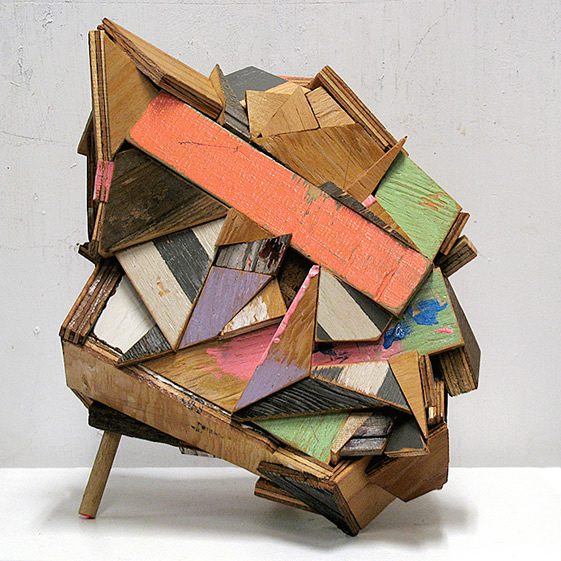
Tier 2 10 x 13 x 14
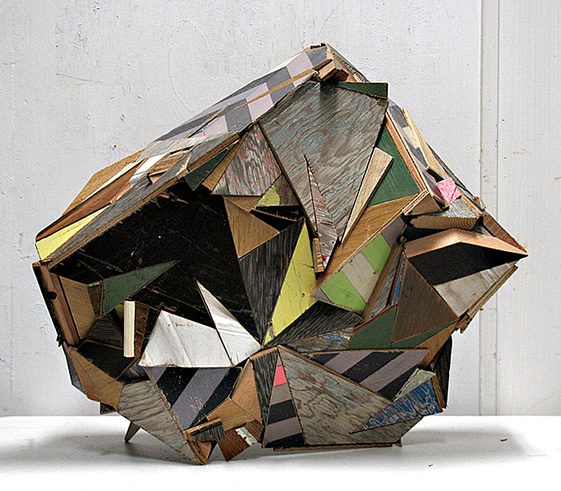
Waste Drop (Chilliwack) 19 x 11 x 17
The top 3 creatives who’ve inspired you…
From a long list, Boris Tellegen, Michael Johannson, and Anish Kapoor
If you could send one iconic design to another planet to show off our exploits in creativity, what would it be?
The Egyptian pyramid
If you could live in one place, time, or cultural movement; what would that be?
Early 1900s Cubism in Spain!
What’s next for Aaron Moran?
Aside from a couple of exhibitions lined up, I’d like to focus on installation and building LARGE for a year or so before going for my masters degree.
How would you like to be remembered?
‘That geometric guy’
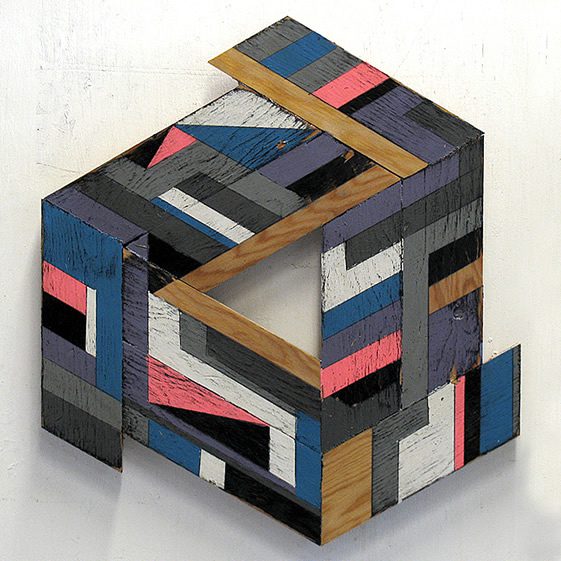
Equilateral Exploded View II 18 x 20
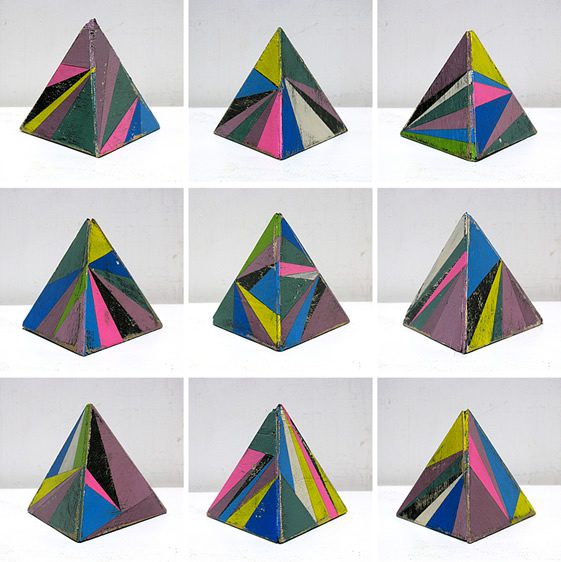
By-Product (Variations) 5 x 5 x 5 (ea)
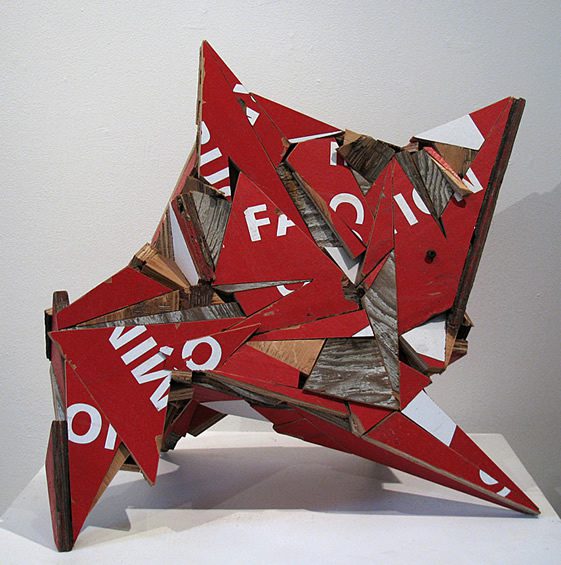
A Criticised Form Non Union Lot 21 x 17 x 12
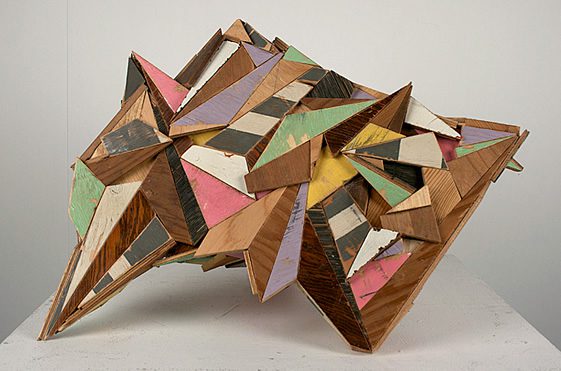
Progress Sprawl 28 x 19 x 21








